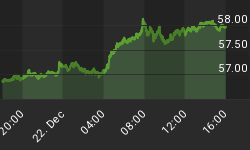Going into Thursday's trading, FX traders will watch the return of major economic data from the US and Canada. But before previewing these events and their FX implications, it's worth giving synopsis on what happened in the NY session. There are some doubts about the durability of the carry trade (selling yen across the board simultaneous with rising gold and equities). We have seen in early morning NY (around 8-9 am EST) how the yen rallied across the board, dragging the dollar, pound and euro. Rumors of a hedge fund caught in the wrong side of the rising pound and as well as rumblings of renewed reports of sub-prime defaults also led to some unwinding, which caused US stocks to open lower. With US equities struggling into record territory, a loss of momentum could easily turn into sharp selling in the event of a weak reading in the leading indicators and Philly Fed index.
Tomorrow's March CPI report from Canada (7 am EST), US weekly jobless claims (8:30 am), March US leading indicators (10 am) and the April Philadelphia Fed survey (12 pm) will be highly scrutinized. But before all this, stay tuned ahead of China's Q1 GDP due at 11 am EST. See details below.
USDJPY: Running out of Carry. Watch Chinese GDP at 11 pm EST
Our forecast of 120 yen failed to materialize as the rise in USDJPY gave out at 119.85 before the pair started looking increasingly shaky on a combination of general deterioration in USD sentiment--brought about by the 26-year lows against the pound sterling and soft US inflation maintaining the case for a 2007 Fed easing. Rumors of a possible Bank of Japan rate hike as early as May did manage to boost the yen.
The 4-hour chart shows the declining channel has a resistance at 118.65-70, where the pair topped out in late Wednesday afternoon NY trade. The prolonged decline towards the 118.50s could open the door past the 118.53 support, until the next key target of 118.09 -- (Wednesday low), which is both the 38% retracement of 115.2-119.87 move and just above the 200-day MA. A clear break of the 200 day means a breach below 117.90, which clears the way for 117.54 -- 50% retracement of the said move.
What about tonight's release of China's Q4 GDP? The report is due at 11 am EST and is expected to show a figure of just below 11.0%. The reaction in FX and commodities markets shall depend on the reaction in Chinese equities. If the report proves weaker than expected (below 10.6%), then worries of a China slowdown could impact Chinese equities negatively, in which case could weigh on commodities and accelerate the unwinding of carry trades, thus, boosting the yen, and helping the US dollar against the Canadian, Aussie and sterling. Nonetheless, if the report is interpreted to show continued overheating in China (a report at above 10.8%), then markets will fear the People's Bank of China will have to undertake tougher measures in tightening policy, which may also weigh on Chinese indices.
With Chinese equity markets trading near record highs, the Dow already at record and European indices at 6-year highs, the risks of an international slide could well materialize today.


USDCAD: 1.1267 Trendline Support Depends on Core CPI
After briefly regaining the 1.13 figure top 1.1337 on weak shipments data, USDCAD pursued its sell-off to fresh 5-month lows at 1.1267, touching the 11-month trend line support. A key catalyst in influencing the CAD's next move will be the 7 am EST release of March CPI, expected up 2.0% y/y, matching the February figure.
But the more important figure will be the core CPI (excluding 8 commodity items), which is expected to have slowed to 2.3% y/y from 2.4% y/y in March. In the event that core CPI grows by at least 2.3% and the headline CPI remains at least at 2.0%, then markets drag USDCAD below the 1.1270 figure towards the interim support of 1.1250 and 1.1220 on the rationale that the inflation is uncomfortably high for the Bank of Canada. Any upside potential in the pair is seen capped at 1.1345-50.
It is important to note that USDCAD often rises on during unwinding of carry trades emerging from hedge fund troubles or renewed reports of sub-prime defaults. A core CPI of at least 2.3% coupled with US weekly jobless claims above 330-335K, may extend the decline in USDCAD. We do not expect the leading indicators index to be a market mover unless it shows a rise of more than 0.3% or 0.4%, or another decline, following the 0.5% fall in February. The key figure will be the Philly Fed index due at noon, expected to rebound to 2.0 from 0.2.
















